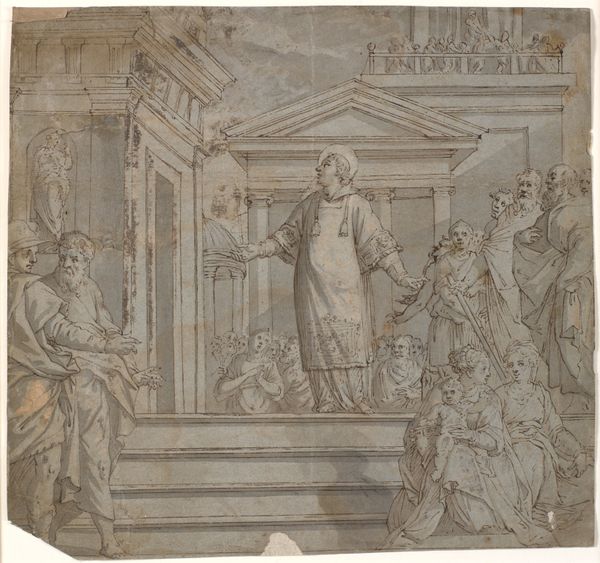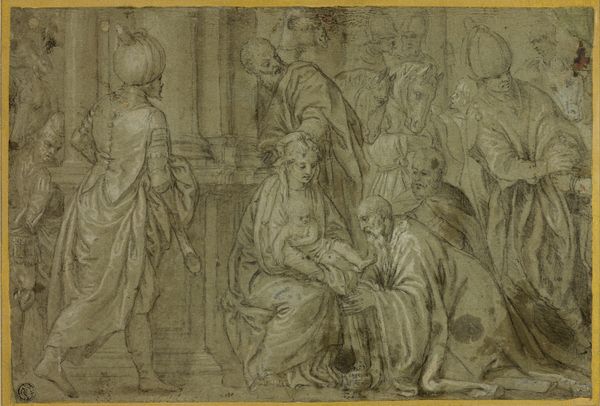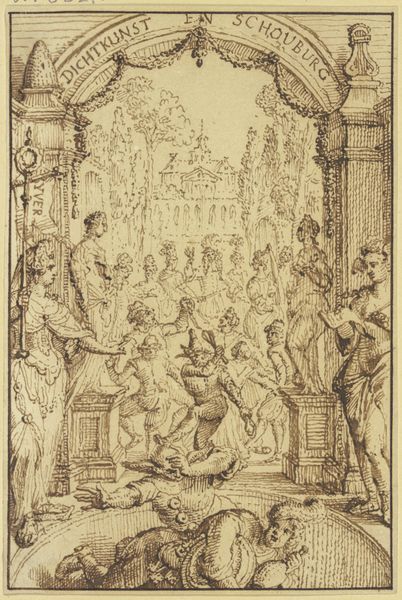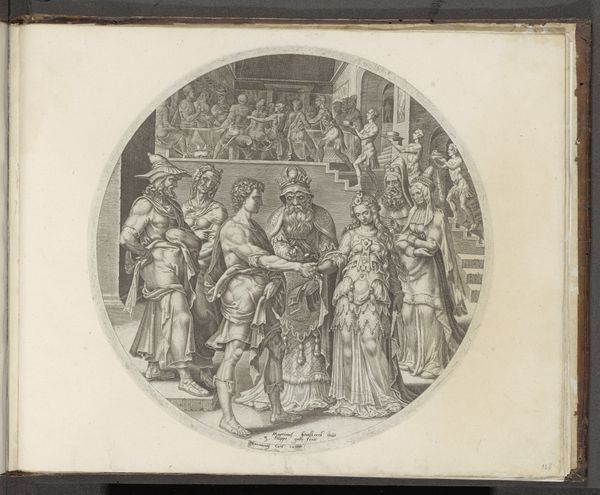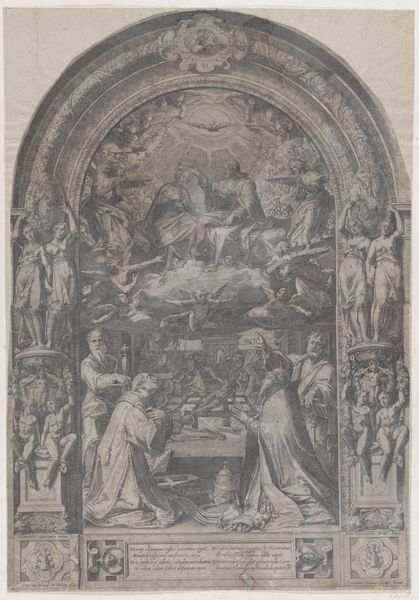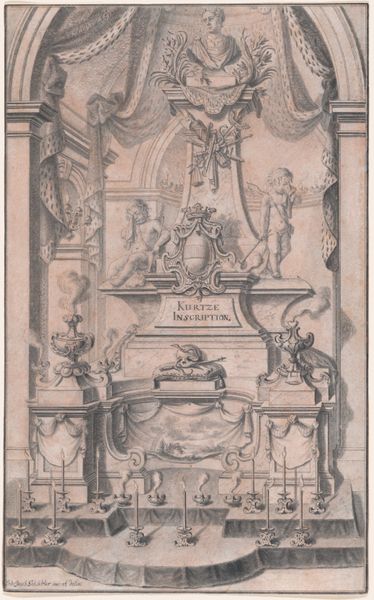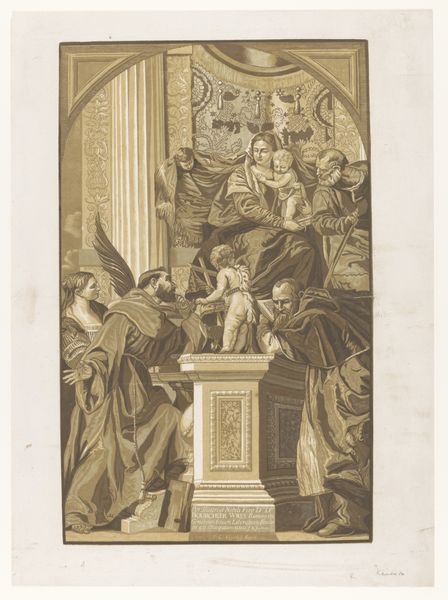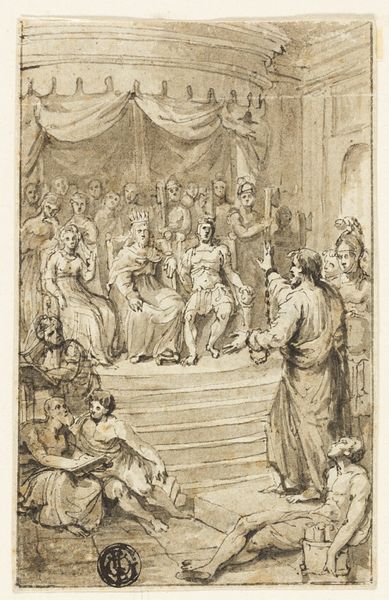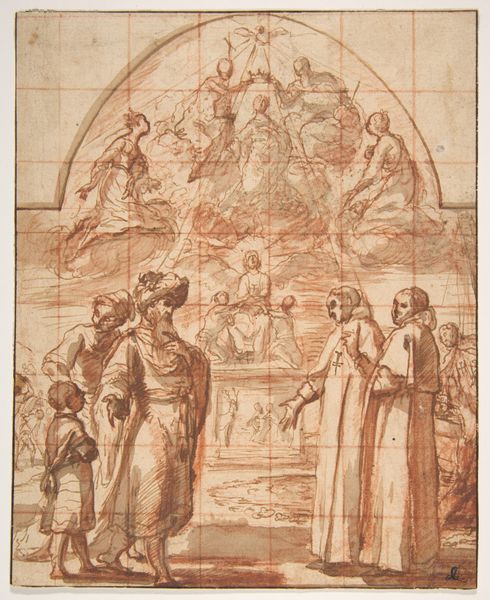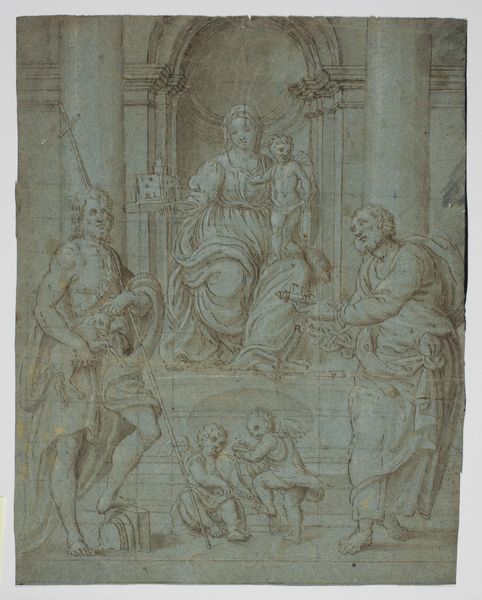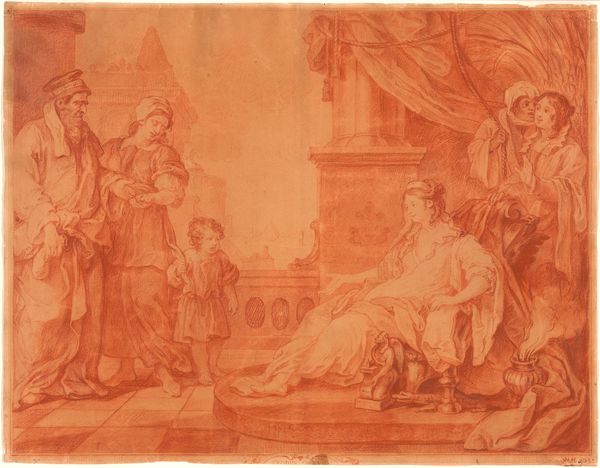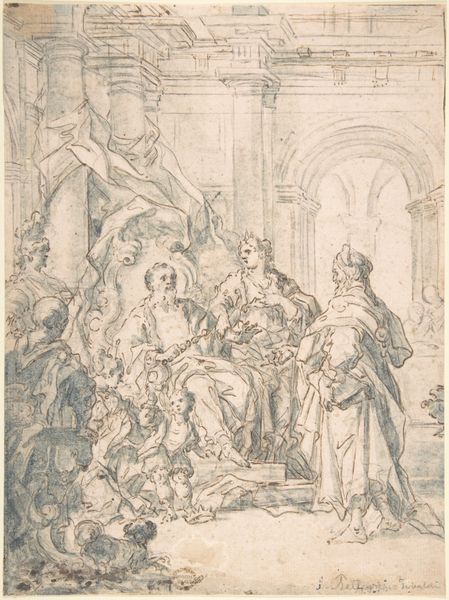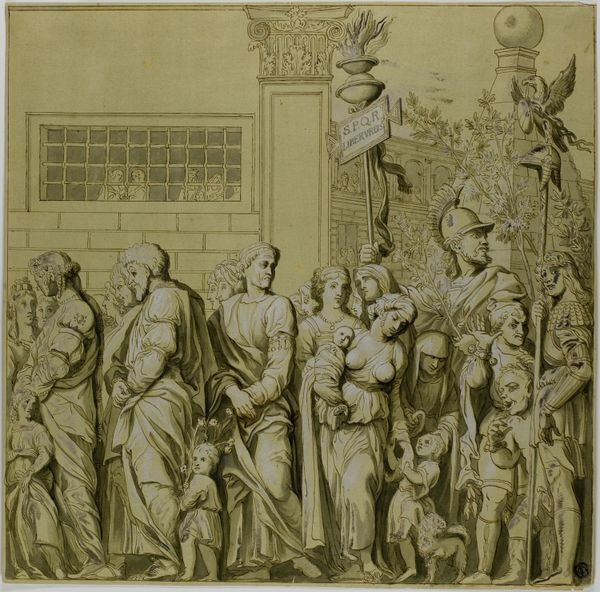
drawing, print, ink
#
portrait
#
drawing
#
narrative-art
# print
#
perspective
#
figuration
#
oil painting
#
ink
#
history-painting
#
italian-renaissance
#
christ
Dimensions: 9-1/8 x 13-7/8 in. (23.2 x 35.2 cm)
Copyright: Public Domain
Curator: Federico Zuccaro, also known as Zuccari, likely created this ink and wash drawing, entitled "Christ Preaching," sometime between 1500 and 1600. You can find it here at the Metropolitan Museum of Art. Editor: The sepia tones lend it an antique feel. The dynamism achieved with ink wash is remarkable; the composition pulses with a restrained energy, particularly focused on the central figure. Curator: Zuccaro lived during the height of the Counter-Reformation, and his artistic output often served to visually reinforce Catholic doctrine and values. Consider how imagery in the Church played a significant role in communicating narratives and solidifying power during this period. Editor: Absolutely, and what I see is the manipulation of space—the receding architecture draws the eye to Christ. The tonal gradations define form economically, establishing hierarchies, but it doesn't necessarily lend itself to deep engagement; there is no attempt here at photorealism. Curator: It’s interesting that you mention perspective and hierarchy. We should consider the social context within the religious. Christ, elevated on what appears to be an architectural structure, or pulpit, occupies a position of undeniable authority. This isn't simply a biblical scene; it’s also an illustration of social structure, further amplified by how his words were viewed, preserved and shared by way of the institution of the Church. Editor: An interesting and potentially important point, but let us also acknowledge how expertly the medium contributes to the drawing's thematic intent; how lines become light, creating an ethereal atmosphere which, however subtly, encourages spiritual introspection. Curator: Fair point. Still, when interpreting artwork such as Zuccaro’s drawing, it is crucial to delve into its historical context. By understanding its environment, the messages and its intentions of these forms can really come alive. Editor: Agreed. The conversation lies in that very tension – between appreciating the inherent aesthetics of a work and acknowledging its embedded societal influences. It helps see beyond face value, enriching and layering any viewing experience.
Comments
No comments
Be the first to comment and join the conversation on the ultimate creative platform.
